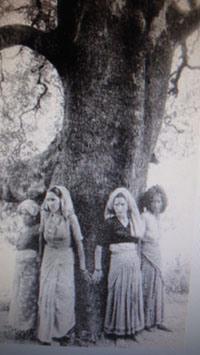
from wikipedia
by Carl Pope / Huffington Post
The protest sweeping Turkey began with trees — specifically, the last remaining downtown green space in this ancient capital, a park in Taksim Square. Protestors began gathering peacefully to try to stop government plans to replace the trees with a shopping mall. Disturbingly, the government and police overreacted viciously, clearing the square with powerful hoses mixing water and tear gas. Now, according to the Interior Ministry, 53 civilians and 26 police officers have been injured, and the protest movement has spread to 48 cities with over 900 arrests so far.
As one protestor, Seyfettin Sabaz, who is training to be a dentist, told the New York Times, “Many of the Turkish public think that we are here as environmentalists to save our sycamore trees. But that’s not it. We are here to stand up against those that are trying to make a profit from our land.”
And it is very clear that the park protest has triggered a much broader expression of dissatisfaction in a major segment of the Turkish public against the ruling AKP Islamist government of Tayyip Erdogan. But at the same time, a look at similar situations should remind us that when public concerns about autocratic governments begin to bubble over, trees are surprisingly often the symbolic trigger that pulls communities into the streets.
The case closest to Turkey is probably Kenya, where efforts by government of President Daniel Arap Moi to privatize a park in downtown Nairobi led eventual Nobel Peace Prize Winner Wangaari Matthei and her Green Belt Movement into protests which ended up blocking the project through international pressure. In the early days of glasnost and perestroika much of the burgeoning challenge to the Soviet system expressed itself through previously forbidden ecological activism. While India’s chipko movement had its origins prior to the seizure of Emergency Powers by Prime Minister Indira Gandhi, it grew dramatically and scope during the period of her authoritarian powers. In Myanmar, during the darkest period the junta, citizen activists organized protests against the Yadana oil pipeline cutting through Myanmar’s forested areas. And while the essence of Charles Taylor’s brutal rule in Liberia had little to do with forest issues, it was illegal tropical forest logging which brought about the first effective international sanctions against Taylor, dried up the funding for his regime from log exports, and led to his eventual downfall.
So why trees?
Autocrats in the modern age cannot rely on ‘divine right’ to justify their rule. So they almost invariably cloak their iron fists in the argument that they alone represent the entire nation against narrow special interests within it who would weaken, corrupt, or divide it. You can see exactly this line of argument spun by the Assad regime in Syria — without his strong hand, Syria’s various sects could never get along with each other. Modern autocrats copy Louis XIV — “the state it is myself.”
But in fact, with exceptions almost too rare to mention, these regimes govern for the benefit of insiders, and eventually those insiders become greedy. Taking the wealth of the previous ruling elite no longer suffices. The regime’s supporters begin to appropriate for themselves what are broadly understood to be public resources. Either trees themselves, or the public space dedicated to their nurture, become a prized target.
This may — or may not — be the worst crime committed by a dictatorship — probably not in most cases. But it is a crime against the entire nation, and as such it highlights the fraudulent nature of the government’s effort to claim legitimacy. You can argue — however hollowly — that a political party has been suppressed because it was plotting with foreigners. It is difficult to make that argument against a sycamore tree.
Trees thus become a tangible symbol of the common space which autocrats claim to serve, but actually destroy. And they are visible — whether standing or toppled. Often, protestors physically hug them, the Chipko being the most famous example.
The protests usually don’t stop with trees. Wangari Mathei eventually undermined Daniel arap Moi on a host of fronts. It was not trees but tanks that brought Boris Yeltsin to power in Russia. Forced sterilization had more to do than logging with Indira Gandhi’s ouster in the election of 1977 — indeed, she is widely viewed as being India’s most environmentally minded Prime Minister. And Turkey’s protests have shifted rapidly from a fight about the last park in downtown Istanbul.
But still, there is something about a tree that should make an autocrat shiver.

